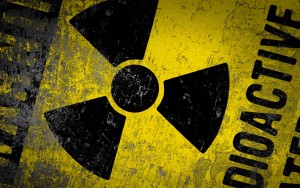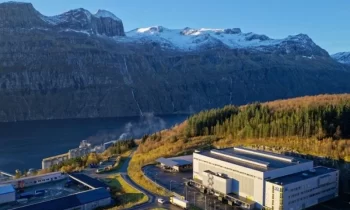Norwegian authorities have reported trace amounts of radioactive iodine 131 in the atmosphere, which emerged last week in measurements taken in the country’s far northeast near the city of Tromsø.
Officials with the Norwegian Radiation and Nuclear Safety Authority were at pains to emphasize that levels of the radioactive isotope were extremely low and posed no threat to human health.
But they added that the source of the iodine emissions remained unknown – though, as noted by the Barents Observer, the half-life of iodine 131 is only seven days, implying that the source of the higher measurements can’t be too far from Tromsø.

Iodine is widely used for medical purposes, and in research and industry, but it can also be a by-product of nuclear reactor accidents. It’s also linked to cancer when its found in high concentrations and can contaminate dairy products and produce.
Still, such harmless blips in radioactivity seem to occur in Norway on a routine basis and often become fodder for elaborate conspiracy theories. Such was the case in February of 2017, when a bevy of online nuclear enthusiasts, abetted by Russian websites peddling radiation intrigues, concluded that trace iodine measurements taken that month in Europe must surely indicate a hushed-up disaster at Norway’s Halden Reactor.
A report by Bellona was even drawn into the controversy and cited as proof that Oslo was scheming to hide a simmering catastrophe at the country’s single reactor – despite the fact that Bellona had said precisely the opposite.
The less dramatic solution to that whodunit was that the source of that particular iodine leak remains, unsettlingly, a head-scratcher to this day. Still, one can’t help trying to connect the dots. Yet another small-scale non-threatening iodine spike was reported the next month, in March of 2017.
The origins of this one, too, remain mysterious. However, the timing of the two iodine spikes, which occurred less than a month apart, suggested at the time that, somewhere, there must have been an ongoing leak of the isotope.
The Norway’s atmosphere remained, apparently, iodine-free until earlier this week, when the nuclear authorities reported a spike in levels of the isotope between January 8 and February 4.
Small upticks in iodine 131 levels have, in the past, indicated leaks of the substance from facilities that use the isotope for various scientific purposes. In 2012, a heightened amount of iodine detected over Europe was traced to a Hungarian laboratory that was manufacturing the isotope for use in nuclear medicine.
More ominously, iodine can be released by nuclear reactor malfunctions and accidents. Such was the case after the triple meltdown at Fukushima, when much of Northeast Japan was coated in the isotope contaminating mild and vegetables. No accidents in Europe or Russia, however, have been reported.
That said, it may take some time to establish the origins of this recent uptick in iodine levels – and in that time, the world of social media and armchair nuclear scientists may draw conclusions of its own. For now, the biggest consequence of the iodine presence is an uptick of the national pulse, which will, in time, like the iodine readings return to normal.



